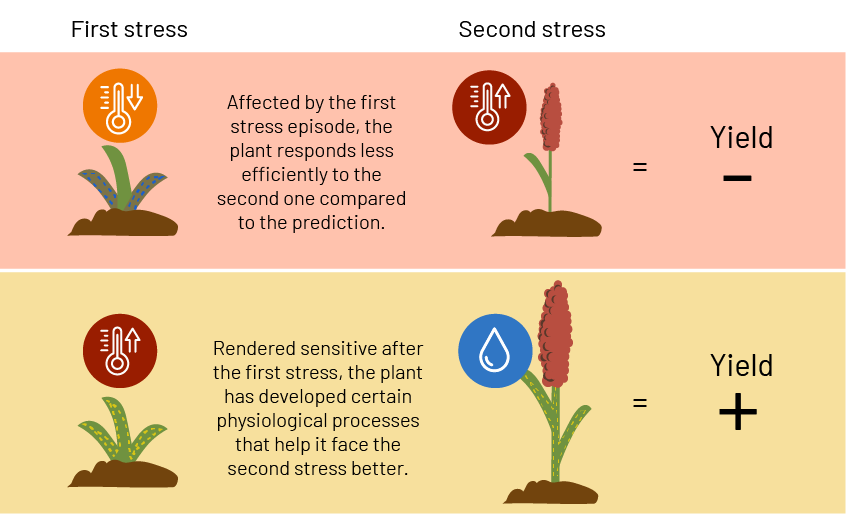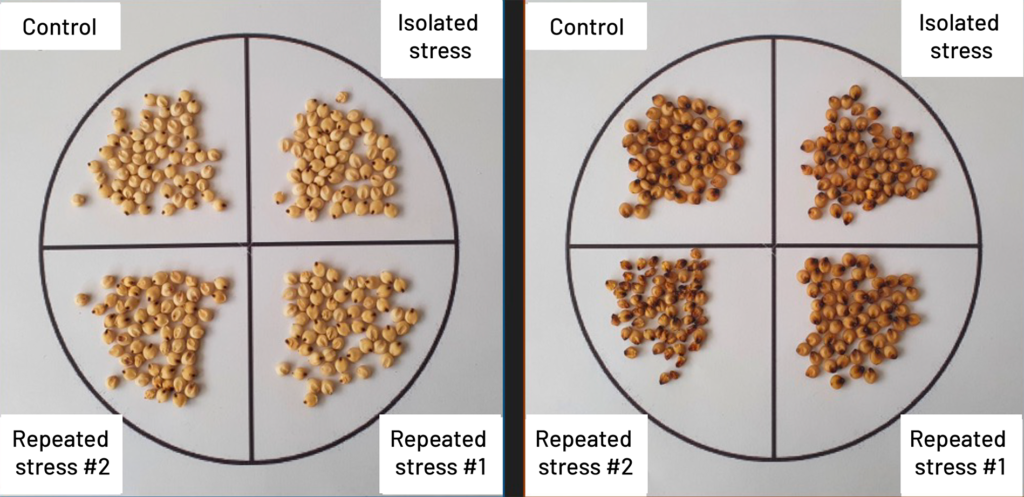MIRRORS: Research in the Service of Prediction Models
The MIRRORS (Modelling Crop Responses to Repeated Stress) project studies the performance of rapeseed and sorghum in order to better predict their behaviour, anticipate the impact of various weather constraints they are confronted with, develop action plans, and implement required measures. Christine Granier, Head Researcher in Ecophysiology with the INRAE, agreed to answer our questions.
Sorghum-ID: What were the findings that were at the origin of the MIRRORS project?

Christine Granier: In recent years, crop simulation models have had difficulty predicting yields when the crops were faced with repeated stressors during their growth. Today, we live in a climate change environment that is characterised not only by extreme weather events, but also by an increased frequency thereof. Lower temperatures in a crop’s early stages and high temperatures and/or drought in its later stages – whether isolated or recurrent, these events are stressful to plants and influence yields and crop quality. The MIRRORS project gathers together four research units made of scientists of INRAE, CIRAD, and INRIA[1] and focuses on improving crop performance, under repeated climatic stress scenarios.
Sorghum-ID: What were the findings that were at the origin of the MIRRORS project?
C.G. – Our working hypothesis is as follows: the effect of a succession of stressors does not equate the sum of the individual effects of each event – for two main reasons.

The two cases depend on the stress intensity and length, the plant’s growth stage at the time of the stress occurrence, and the length of time between the two events. On the other hand, sometimes, the working hypothesis is not retained – in which case a succession of stress events equates the sum of the individual effects of each event.
Sorghum-ID: What are the main research axes of the MIRRORS project?
C.G.: We use two approaches that complete one another: a data-driven approach (consisting in data mining) and a process-driven approach (process observation). We focus on the stress driven by high temperatures during the crop’s reproductive stages.
The first approach consists in analysing the existing data sets as they are, using data mining statistical methods. Our researchers have access to a CTPS database reporting the yields of about fifteen sorghum hybrids, collected in around twenty locations, in France, over a period of twenty years. They compare the data against the weather data collected by the stations located in those sites or in their proximity. “Types” of thermal scenarios are thus identified and placed face to face with the recorded yields.
Our second approach consists of targeted trials carried out in controlled environments (glasshouses and growth chambers), in order to test the effects of isolated and recurrent thermal stressors at precise growth stages, in grain production. We also analyse yield components and grain quality. Thus we replicate the scenarios identified through the data mining, with the isolated and recurrent thermal stressors occurring during the crop’s growth.
Sorghum-ID: What lessons can we learn from the project, at this point?
C. G.: The first trials showed sharp contrasts between the plants’ reactions to the isolated versus the recurrent stress events, under the different temperature scenarios and using different hybrids.

The project is meant to help us understand the plants’ response to isolated/repeated stress events better, and implement a series of ecophysiological models that will allow us to take into account a possible acclimatisation of the plants after a first high-temperature stress, which would be beneficial for their response to a second stress of the same type and/or in case of an amplified negative effect.

These works are the starting point for a multidisciplinary, more ambitious project, whose funding has been taken over by ANR, and where the current ecophysiological and modelling competences would be strengthened by molecular biology, biochemistry, and imaging, competences.
Contact : christine.granier@inrae.fr
[1] Partner units: EVA – Mixed Research Unit in Caen (expertise in rapeseed ecophysiology), Mixed Research Unit of AGAP Institute, Montpellier (expertise in sorghum genetics, ecophysiology, and models), ISPA Mixed Research Unit in Bordeaux (expertise in ecophysiological models), LORIA – Mixed Research Unit in Nancy (expertise in statistic models and data mining).
Continue ?
Sorghum in One Word

Sorghum Shows Three Indisputable Assets, as Production Costs Rise













